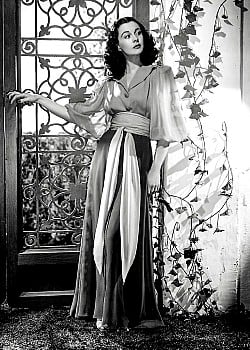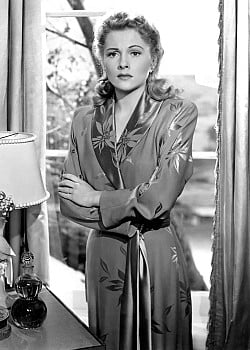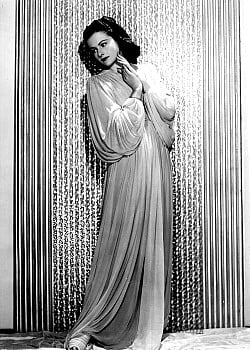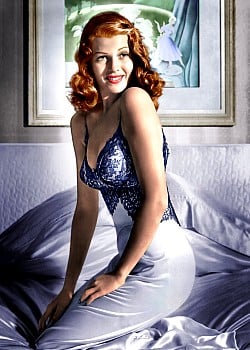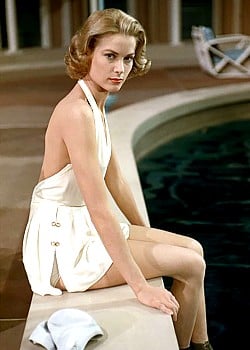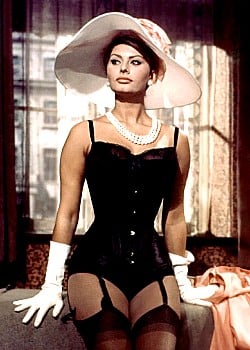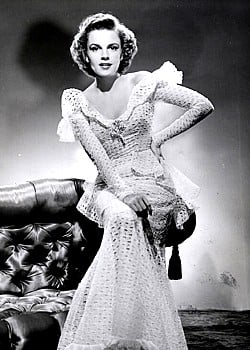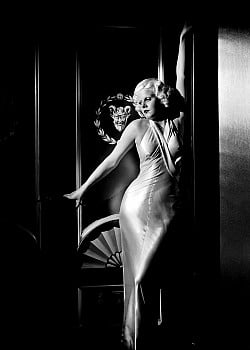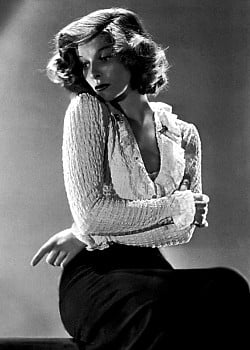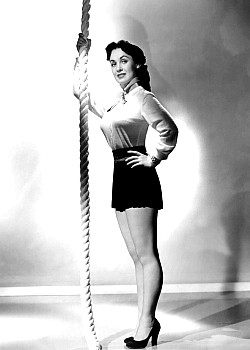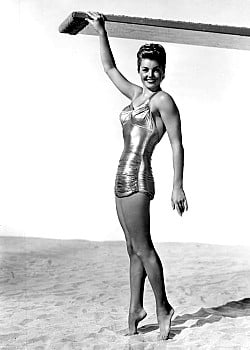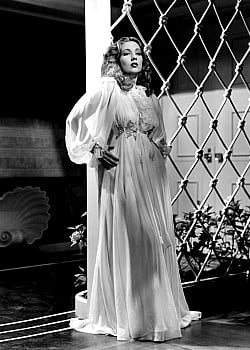Olivia De Havilland
Also known as: Olivia Mary de Havilland 
Olivia De Havilland alias list
Olivia De Havilland Biography
Personal
Body
Extra
About Olivia De Havilland
Dame Olivia Mary de Havilland DBE (/də ˈhævɪlənd/; July 1, 1916 – July 26, 2020) was a British and American actress. The major works of her cinematic career spanned from 1935 to 1988. She appeared in 49 feature films and was one of the leading actresses of her time. At the time of her death in 2020 at age 104, she was the oldest living and earliest surviving Academy Award winner and was widely considered as being the last surviving major star from the Golden Age of Hollywood cinema. Her younger sister, whom she had a noted rivalry, which was well documented in the media ]was Oscar-winning actress Joan Fontaine.
De Havilland first came to prominence with Errol Flynn as a screen couple in adventure films such as Captain Blood (1935) and The Adventures of Robin Hood (1938). One of her best-known roles is that of Melanie Hamilton in Gone with the Wind (1939), for which she received her first of five Oscar nominations, the only one for Best Supporting Actress. De Havilland departed from ingénue roles in the 1940s and later distinguished herself for performances in Hold Back the Dawn (1941), To Each His Own (1946), The Snake Pit (1948), and The Heiress (1949), receiving nominations for Best Actress for each and winning for To Each His Own and The Heiress. She was also successful in work on stage and television. De Havilland lived in Paris from the 1950s and received honours such as the National Medal of the Arts, the Légion d'honneur, and the appointment to Dame Commander of the Order of the British Empire at the age of 101.
In addition to her film career, de Havilland continued her work in the theatre, appearing three times on Broadway, in Romeo and Juliet (1951), Candida (1952), and A Gift of Time (1962). She also worked in television, appearing in the successful miniseries Roots: The Next Generations (1979) and Anastasia: The Mystery of Anna (1986), for which she received a Primetime Emmy Award nomination and won the Golden Globe Award for Best Supporting Actress in a Television Movie or Series. During her film career, de Havilland also collected two New York Film Critics Circle Awards, the National Board of Review Award for Best Actress, and the Venice Film Festival Volpi Cup. For her contributions to the motion picture industry, she received a star on the Hollywood Walk of Fame. She and her sister remain the only siblings to have won major acting Academy Awards.
By birth, Olivia was a member of the de Havilland family, which belonged to landed gentry that originated from mainland Normandy. Her mother, Lilian Fontaine (née Ruse; 1886–1975), was educated at the Royal Academy of Dramatic Art in London and became a stage actress. Lilian also sang with the Master of the King's Music, Sir Walter Parratt, and toured the United Kingdom with the composer Ralph Vaughan Williams. Olivia's father, Walter de Havilland (1872–1968), served as an English professor at the Imperial University in Tokyo City before becoming a patent attorney. Her paternal cousin was Sir Geoffrey de Havilland (1882–1965), an aircraft designer and founder of the de Havilland aircraft company.
Lilian and Walter met in Japan in 1913 and married the following year; the marriage was not a happy one, owing in part to Walter's infidelities. Olivia Mary de Havilland was born on July 1, 1916. They moved into a large house in Tokyo City, where Lilian gave informal singing recitals. Olivia's younger sister Joan (Joan de Beauvoir de Havilland)—later known as actress Joan Fontaine—was born 15 months later, on October 22, 1917. Both sisters became British subjects automatically by birthright.
In February 1919, Lilian persuaded her husband to take the family back to Britain for a climate better suited to their ailing daughters. They sailed aboard the SS Siberia Maru to San Francisco, where the family stopped to treat Olivia's tonsillitis. After Joan developed pneumonia, Lilian decided to remain with her daughters in California, where they eventually settled in the village of Saratoga, 50 miles (80 km) south of San Francisco. Her father abandoned the family and returned to his Japanese housekeeper, who eventually became his second wife.
Lundblad's Lodge, in Saratoga, where the family lived for a while Olivia was raised to appreciate the arts, beginning with ballet lessons at the age of four and piano lessons a year later. She learned to read before she was six, and her mother, who occasionally taught drama, music, and elocution, had her recite passages from Shakespeare to strengthen her diction. During this period, her younger sister Joan first started calling her "Livvie", a nickname that would last throughout her life. De Havilland entered Saratoga Grammar School in 1922 and did well in her studies. She enjoyed reading, writing poetry, and drawing, and once represented her grammar school in a county spelling bee, coming in second place. In 1923, Lilian had a new Tudor-style house built, where the family resided until the early 1930s. In April 1925, after her divorce was finalised, Lilian married George Milan Fontaine, a department store manager for O. A. Hale & Co. in San Jose. Fontaine was a good provider and respectable businessman, but his strict parenting style generated animosity and later rebellion in both of his new stepdaughters
De Havilland continued her education at Los Gatos High School near her home in Saratoga. There she excelled in oratory and field hockey and participated in school plays and the school drama club, eventually becoming the club's secretary. With plans of becoming a schoolteacher of English and speech, she also attended Notre Dame Convent in Belmont.
In 1933, a teenage de Havilland made her debut in amateur theatre in Alice in Wonderland, a production of the Saratoga Community Players based on the novel by Lewis Carroll. She also appeared in several school plays, including The Merchant of Venice and Hansel and Gretel. Her passion for drama eventually led to a confrontation with her stepfather, who forbade her from participating in further extracurricular activities. When he learned that she had won the lead role of Elizabeth Bennet in a school fund-raising production of Jane Austen's Pride and Prejudice, he told her that she had to choose between staying at home or appearing in the production and not being allowed home. Not wanting to let her school and classmates down, she left home, moving in with a family friend.
After graduating from high school in 1934, de Havilland was offered a scholarship to Mills College in Oakland to pursue her chosen career as an English teacher. She was also offered the role of Puck in the Saratoga Community Theater production of Shakespeare's A Midsummer Night's Dream. That summer, Austrian director Max Reinhardt came to California for a major new production of the same play to premiere at the Hollywood Bowl. After one of Reinhardt's assistants saw her perform in Saratoga, he offered her the second understudy position for the role of Hermia. One week before the premiere, the understudy Jean Rouverol and lead actress Gloria Stuart both left the project, leaving 18-year-old de Havilland to play Hermia. Impressed with her performance, Reinhardt offered her the part in the four-week autumn tour that followed. During that tour, Reinhardt received word that he would direct the Warner Bros. film version of his stage production, and he offered her the film role of Hermia. With her mind still set on becoming a teacher, de Havilland initially wavered, but eventually, Reinhardt and executive producer Henry Blanke persuaded her to sign a five-year contract with Warner Bros. on November 12, 1934, with a starting salary of $200 a week, marking the beginning of a professional acting career which would span more than 50 years.
De Havilland made her screen debut in Reinhardt's A Midsummer Night's Dream (1935), which was filmed at Warner Brothers studios from December 19, 1934, to March 9, 1935. During the production, de Havilland picked up film acting techniques from the film's co-director William Dieterle and camera techniques from cinematographer Hal Mohr, who was impressed with her questions about his work. By the end of filming, she had learned the effect of lighting and camera angles on how she appeared on screen and how to find her best lighting. Following premieres in New York City and Beverly Hills, the film was released on October 30, 1935. Despite the publicity campaign, the film generated little enthusiasm with audiences. While the critical response was mixed, de Havilland's performance was praised by The San Francisco Examiner critic. In his review in the Brooklyn Daily Eagle, Winston Burdett wrote that she "acts graciously and does greater justice to Shakespeare's language than anyone else in the cast". Two minor comedies followed, Alibi Ike (1935) with Joe E. Brown and The Irish in Us (1935) with James Cagney. In both films, she played the sweet and charming love interest—a role into which she would later become typecast. After the experience of being a Reinhardt player, de Havilland felt disappointed being assigned these routine heroine roles. In March, de Havilland and her mother moved into an apartment at the Chateau des Fleurs at 6626 Franklin Avenue in Hollywood
Although Warner Brothers studio had assumed that the many costumed films that studios such as MGM had earlier produced would never succeed during the years of the American Great Depression, they nonetheless took a chance by producing Captain Blood (1935). The film is a swashbuckler action drama based on the novel by Rafael Sabatini and directed by Michael Curtiz.: 63 Captain Blood starred a then little-known contract bit-part actor and former extra, Errol Flynn, with the equally little-known de Havilland. According to film historian Tony Thomas, both actors had "classic good looks, cultured speaking voices, and a sense of distant aristocracy about them". Filmed between August 5 and October 29, 1935, Captain Blood gave de Havilland the opportunity to appear in her first costumed historical romance and adventure epic, a genre to which she was well suited, given her beauty and elegance.
In the film, she played Arabella Bishop, the niece of a Jamaica plantation owner who purchases at auction an Irish physician wrongly condemned to servitude. The on-screen chemistry between de Havilland and Flynn was evident from their first scenes together, where clashes between her character's spirited hauteur and his character's playful braggadocio did not mask their mutual attraction to each other. Arabella is a feisty young woman who knows what she wants and is willing to fight for it. The bantering tone of their exchanges in the film—the healthy give-and-take and mutual respect—became the basis for their on-screen relationship in subsequent films. Captain Blood was released on December 28, 1935, and received good reviews and wide public appeal. De Havilland's performance was singled out in The New York Times and Variety. The film was nominated for four Academy Awards, including Best Picture. The popular success of the film, as well as the critical response to the on-screen couple, led to seven additional collaborations: The Charge of the Light Brigade (1936), The Adventures of Robin Hood (1938), Four's a Crowd (1938), Dodge City (1939), The Private Lives of Elizabeth and Essex (1939, although de Havilland played a supporting role with Bette Davis as Flynn's leading lady), Santa Fe Trail (1940), and They Died with Their Boots On (1941).
De Havilland appeared in Mervyn LeRoy's historical drama Anthony Adverse (1936) with Fredric March. Based on the popular novel by Hervey Allen, the film follows the adventures of an orphan raised by a Scottish merchant whose pursuit of fortune separates him from the innocent peasant girl he loves, marries, and eventually loses. De Havilland played a peasant girl, Angela, who after being separated from her slave-trader husband becomes opera star Mademoiselle Georges, the mistress of Napoleon. The film earned six Academy Award nominations, including Best Picture. It garnered de Havilland good exposure and the opportunity to portray a character as she develops over time. Howard Barnes of the New York Herald Tribune found her later scenes as Mademoiselle Georges "not very credible", but Frank S. Nugent of The New York Times called her "a winsome Angela". That same year, she was re-united with Flynn in Michael Curtiz's period action film The Charge of the Light Brigade (1936), featuring Flynn look-alike Patric Knowles (playing Flynn's brother) and David Niven. The picture was set during the Crimean War and became a major box office hit.
During the film's production, de Havilland renegotiated her contract with Warner Bros. and signed a seven-year contract on April 14, 1936, with a starting weekly salary of $500 (equivalent to $11,000 in 2023). Toward the end of the year, 20-year-old de Havilland and her mother moved to 2337 Nella Vista Avenue in the Los Feliz section of Los Angeles.
De Havilland had her first top billing in Archie Mayo's comedy Call It a Day (1937), about a middle-class English family struggling with the romantic effects of spring fever during the course of a single day. De Havilland played daughter Catherine Hilton, who falls in love with the handsome artist hired to paint her portrait. The film did not do well at the box office and did little to advance her career. She fared better in Mayo's screwball comedy It's Love I'm After (1937) with Leslie Howard and Bette Davis. De Havilland played Marcia West, a debutante and theatre fan enamoured with a Barrymore-like matinee idol who decides to help the girl's fiancé by pretending to be an abominable cad. The film received good reviews, with Variety calling it "fresh, clever, excellently directed and produced, and acted by an ensemble that clicks from start to finish" and praising de Havilland.
Also released during 1937 was another period film with de Havilland, beginning with The Great Garrick, a fictional romantic comedy about the 18th-century English actor's encounter with jealous players from the Comédie-Française who plot to embarrass him on his way to Paris. Wise to their prank, Garrick plays along with the ruse, determined to get the last laugh, even on a lovely young aristocrat, de Havilland's Germaine Dupont, whom he mistakenly believes to be one of the players. With her refined demeanour and diction, de Havilland delivers a performance that is "lighthearted and thoroughly believable", according to Judith Kass. Variety praised the film, calling it "a production of superlative workmanship". Despite the positive reviews, the film did not do as well at the box office. The Michael Curtiz-directed romantic drama Gold Is Where You Find It is a film about the late 19th-century conflict in the Sacramento Valley between gold miners and their hydraulic equipment and farmers whose land is being flooded. De Havilland played the daughter of a farmer, Serena Ferris, who falls in love with the mining engineer responsible for the flooding portrayed by George Brent. The picture also stars Claude Rains. The film was released in February 1938, and was her first appearance in a Technicolor film but not her last. She would make three more Technicolor films within the next two years, two of which would arguably remain her most fondly remembered by audiences across the decades since their release.
In September 1937, de Havilland was selected by Warner Bros. studio head Jack L. Warner to play Maid Marian opposite Errol Flynn in The Adventures of Robin Hood (1938). Principal photography for this Technicolor production took place between September 26, 1937, and January 14, 1938, including location work at Bidwell Park, Busch Gardens in Pasadena, and Lake Sherwood in California. Directed by William Keighley and Michael Curtiz, the film is about the legendary Saxon knight who opposes the corrupt and brutal Prince John and his Norman lords while good King Richard is away fighting in the Third Crusade. The king's ward Maid Marian initially opposes Robin Hood, but she later supports him after learning his true intentions of helping his oppressed people. No mere bystander to events, Marian risks her life to save Robin by providing his men with a plan for his escape. As defined by de Havilland, Marian is both a beautiful fairy-tale heroine and a spirited, intelligent woman "whose actions are governed by her mind as well as her heart", according to author Judith Kass. The Adventures of Robin Hood was released on May 14, 1938, and was an immediate critical and commercial success, earning an Academy Award nomination for Best Picture. It went on to become one of the most popular adventure films of the Classical Hollywood era.
The success of The Adventures of Robin Hood raised de Havilland's status, but this was not reflected in her subsequent film assignments at Warner Bros. Her next several roles were more routine and less challenging. In the romantic comedy Four's a Crowd (also 1938), she played Lorri Dillingwell, a flighty rich girl being romanced by a conniving public relations man looking to land an account with her eccentric grandfather. In Ray Enright's romantic comedy Hard to Get (1938), she played another frivolous rich girl, Margaret Richards, whose desire to exact revenge on a gas station attendant leads to her own comeuppance. In the summer of 1938, she portrayed the love interest between two U.S. Navy pilot brothers in Wings of the Navy, released in early 1939. While de Havilland was certainly capable of playing these kinds of characters, her personality was better suited to stronger and more dramatic roles, according to Judith Kass. By this time, de Havilland had serious doubts about her career at Warner Bros.
Some film scholars consider 1939 to be the high point of the golden age of Classic Cinema, producing award-winning, box office hits in many genres, including the Western. Warner Bros. produced Michael Curtiz's Technicolor adventure Dodge City (1939), Flynn and de Havilland's first Western film. Set during the American Civil War, the film is about a Texas trailblazer who witnesses the brutal lawlessness of Dodge City, Kansas, and becomes sheriff to clean up the town. De Havilland played Abbie Irving, whose initial hostility towards Flynn's character Wade Hatton is transformed by events, and the two fall in love—by now a proven formula for their on-screen relationships. Curtiz's action sequences, Sol Polito's cinematography, Max Steiner's expansive film score, and perhaps the "definitive saloon brawl in movie history" all contributed to the film's success.[98] Variety described the film as "a lusty western, packed with action". For de Havilland, playing yet one more supporting love interest in a limited role, Dodge City represented the emotional low point of her career to that point. She later said, "I was in such a depressed state that I could hardly remember my lines."
Wearing a flowing dress and bonnet Studio publicity portrait for Gone with the Wind, 1939 In a letter to a colleague dated November 18, 1938, film producer David O. Selznick wrote, "I would give anything if we had Olivia de Havilland under contract to us so that we could cast her as Melanie." The film he was preparing to shoot was the Technicolor epic Gone with the Wind, and Jack L. Warner was unwilling to lend her out for the project. De Havilland had read the novel, and unlike most other actresses, who wanted the Scarlett O'Hara role, she wanted to play Melanie Hamilton—a character whose quiet dignity and inner strength she understood and felt she could bring to life on the screen.
De Havilland turned to Warner's wife Anne for help. Warner later recalled: "Olivia, who had a brain like a computer concealed behind those fawn-like eyes, simply went to my wife and they joined forces to change my mind." Warner relented, and de Havilland was signed to the project a few weeks before the start of principal photography on January 26, 1939. Set in the American South during the Civil War and Reconstruction eras, the film is about Scarlett O'Hara, the strong-willed daughter of a Georgia plantation owner in love with the husband of her sister-in-law Melanie, whose kindness stands in sharp contrast to those around her. According to film historian Tony Thomas, de Havilland's skillful and subtle performance effectively presents this character of selfless love and quiet strength in a way that keeps her vital and interesting throughout the film. Gone with the Wind had its world premiere in Atlanta, Georgia, on December 15, 1939, and was well received. Frank S. Nugent of The New York Times wrote that de Havilland's Melanie "is a gracious, dignified, tender gem of characterization", and John C. Flinn Sr. in Variety called her "a standout". The film won 10 Academy Awards, including Best Picture, and de Havilland received her first nomination for Best Supporting Actress.
Melanie was someone different. She had very, deeply feminine qualities ... that I felt were very endangered at that time, and they are from generation to generation, and that somehow they should be kept alive, and ... that's why I wanted to interpret her role. ... The main thing is that she was always thinking of the other person, and the interesting thing to me is that she was a happy person ... loving, compassionate.
— Olivia de Havilland Within days of completing her work in Gone with the Wind in June 1939, de Havilland returned to Warner Bros. and began filming Michael Curtiz's historical drama The Private Lives of Elizabeth and Essex (also 1939) with Bette Davis and Errol Flynn. She had hoped her work on Selznick's prestige picture would lead to first-rate roles at Warner Bros., but instead, she received third billing below the title as the queen's lady-in-waiting. In early September, she was lent out to Samuel Goldwyn Productions for Sam Wood's romantic caper film Raffles (also 1939) with David Niven, about a high-society cricketer and jewel thief. She later complained, "I had nothing to do with that style of film."
Santa Fe Trail (1940) In early 1940, de Havilland refused to appear in several films assigned to her, initiating the first of her suspensions at the studio. She did agree to play in Curtis Bernhardt's musical comedy drama My Love Came Back (1940) with Jeffrey Lynn and Eddie Albert, who played a classical music student turned swing jazz bandleader. De Havilland played violinist Amelia Cornell, whose life becomes complicated by the support of a wealthy sponsor. In his review in The New York Times, Bosley Crowther described the film as "a featherlight frolic, a rollicking roundelay of deliciously pointed nonsense", finding that de Havilland "plays the part with pace and wit".
That same year, de Havilland was re-united with Flynn in their sixth film together, Michael Curtiz's Western adventure Santa Fe Trail, set against the backdrop of abolitionist John Brown's radical anti-slavery attacks in the days leading up to the American Civil War.] The mostly fictional story follows West Point cadets J. E. B. Stuart, played by Flynn, and George Armstrong Custer, played by Ronald Reagan, as they make their way west, both vying for the affection of de Havilland's Kit Carson Halliday. Playing Kit in a provocative, tongue-in-cheek manner, de Havilland creates a character of real substance and dimension, according to Tony Thomas. Following a world premiere on December 13, 1940, at the Lensic Theatre in Santa Fe, New Mexico—attended by cast members, reporters, the governor, and over 60,000 fans — Santa Fe Trail became one of the top-grossing films of 1940. De Havilland, who accompanied Flynn on the well-publicised train ride to Santa Fe, did not attend the premiere, having been diagnosed with appendicitis that morning and rushed into surgery.
Sister to Joan Fontaine



















